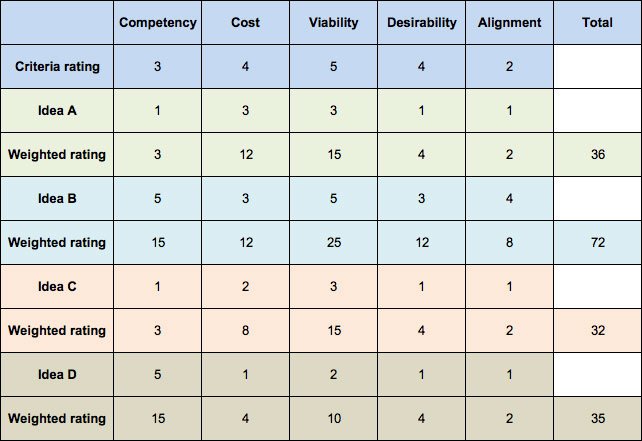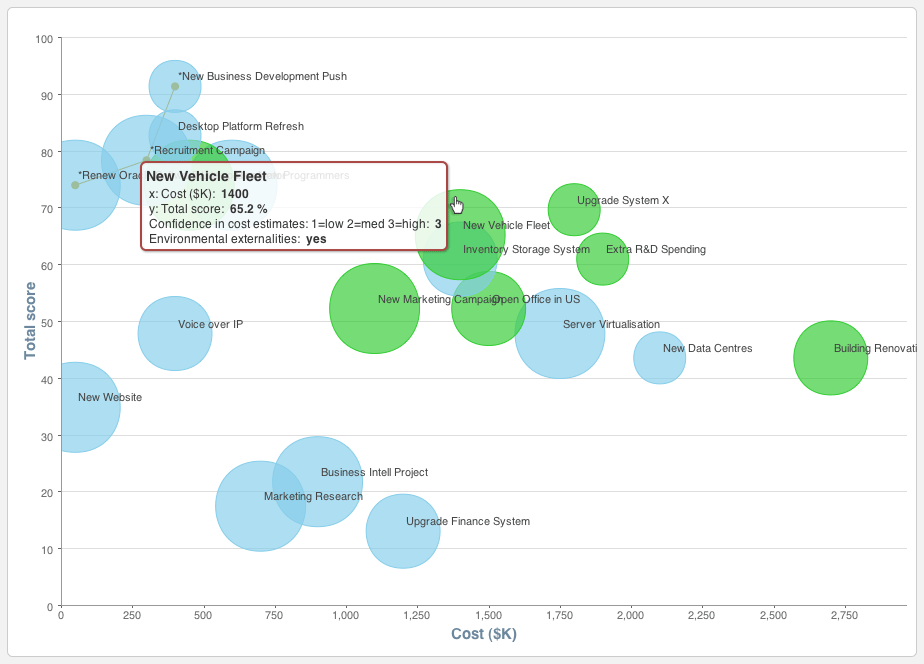What is the next best thing you should do for your website’s SEO to have the biggest impact?
It’s a hard question.
Are deciding based on a plan, or based on a whim?
To try to answer the most simple way you can just repeat what is always the easiest answer: more content, more links.
But those are just the tip of the iceberg. Which content? Which links? What’s the process? Which first? By when? What topic? Who does it?
Trying to plan out projects, tasks, hypothesis, tests, analytics and everything in my SEO processes has been difficult because of two things:
- So much data
- So much opportunity
What makes SEO so great and so challenging is that there are unlimited options and a fuzzy sense of completion.
If you’re a designer and tasked with designing a book cover for a client, your job is pretty cut and dry. Yes you may need to spend tons of time researching, drafting, revising, etc. But the the end goal is concrete, defined, and often with a fixed deadline.
With SEO it’s way different. The ultimate goal is more traffic, revenue, and ROI for the website, but the due dates, goals, deliverables, components, etc are all very mushy.
In the best and biggest businesses, the company has quarterly revenue and marketing goals that have to be met. That’s set from the executive suite by the CEO, COO, or CMO. That then rolls down the hierarchy to the other layers of employees that execute. The VP of Marketing sets goals for their team. The Director of Marketing then sets goals for their team, and it flows all the way down to the SEO team or employee.
The best businesses map all this out into one huge rollup. Google calls it Objectives and Key Results (OKRs). Salesforce maps all goals up to the CEO. This is what to aim for in epic corporate goal planning.
But for small to mid-sized businesses, this sophistication may not be in place. Oftentimes, the SEO team is left to make their own decisions on timelines, inputs, outputs, goals, etc to lead. The business owner or executive team may be too busy to truly collaborate, or just trust the SEO team to “make traffic go up”, and that’s that.
So assuming the messiest situation in which the SEO team is left to make all the decisions, how can that happen?
Unlimited Data Tools, Not So Many Decision Tools
Is it just me or has anyone else noticed a lack of true decision making tools in SEO.
We have so much data: backlink tools, keyword research tools, rank tracking tools, all-in-one tools, content analysis tools, but a big piece of the puzzle missing is better decision making tools.
Essentially all we’re left with is our own spreadsheet templates that we have to make on our own and start from scratch.
So until someone creates this missing SEO tool – a true decision making tool – we have to roll our own.
Decision Science
One of the hardest classes I took as a business major in college was Decision Science DSCI 300. Every undergrad business major dreaded it. For entertainment, you can read student reviews of the class. My favorite one is “IF YOU TAKE THIS YOU WILL HATE YOUR LIFE AND REGRET IT DEARLY!”. Thankfully I was warned it was hard so prepared for the worst and ended up with an A, but that required 5 hours of study a day at some points.
The class was one of those classes that you wonder when you’ll ever use. It’s one of those classes that’s super useful, but 10 years later when you actually have decision making power at a company and can actually do something about it.
A definition of the course:
“Prescriptive business analytics focuses on helping decision makers solve complex business problems. Students develop skills necessary to define, analyze, and solve problems in all areas of business including operations, marketing, and finance. Students utilize spreadsheets to model, analyze, and develop solution alternatives for a variety of business problems. Among the tools students utilize are modeling, influence diagrams, decision trees, Monte Carlo simulation, optimization techniques, and sensitivity analysis.”
To me, that perfectly describes the process I’m currently looking for to make all of my SEO projects simpler, smarter, and more powerful. A unified system that pulls together all the inputs, data, tasks, projects, human capital, and ties it together to help make business decisions that are backed by data.
Decision Science vs Data Science
Data science is a hot new term and was called the sexiest job of the 21st century by Harvard Business Review back in 2010. But now that the excitement has leveled off on this new job, others are saying it’s not the only thing that matters.
Jim Harris on the SAS The Data Roundtable blog states:
Data scientists, as Dhingra explained, analyze data and then “translate and communicate insights to the senior management and key decision makers using information dashboards and visualization tools. But the efforts can become ineffectual if business users, for whom the insights have been generated, do not show equal fervor in consuming it.” This is where decision scientists are needed. “Consumption of analytics,” Dhingra explained, “is a recurrent and overarching process that includes the creation and communication of insights, its implementation and measurement, aligning incentives to endorse a data-driven decision making culture, and lastly the development of cognitive repairs to let facts rule the process.”
While data science is vital to data-driven decision making, Dhingra argued it is only half of the equation that decision science is needed to complete. “To fully harness the business benefits that data can offer,” Dhingra concluded, “organizations will need a complete ecosystem comprising the right integrated processes, technology and people with the right mindset and skills.”
The Decision Matrix
One of my favorite tools for organizing an deciding on projects to do is a decision matrix. I thought I invented it for my own use, but turns out the concept has been out for awhile.
I first produced on in Excel way back in 2012 and it really helped me focus on the most important tasks based on a variety of factors.
I’ve since moved on to Trello and then Asana (because everyone else used those) but I believe that was a mistake. I believe the decision matrix is better so I’ll be returning to it, at least for project prioritization and planning.
Here’s an example of a simplified decision matrix:

Image source: Designorate
Essentially you’re laying out all the important factors that go into your decision. You want the right balance of simplicity and accuracy. For some projects that means just three variables, for others that means 30.
The application of this for SEO projects means taking into account everything you are deciding between and mapping it out in a grid. If you’re deciding at a super high level just what projects to do first, you would line up all the project possibilities and grade them.
The Rollup
How is everything connected in an organization. If you think about it, most companies are a hierarchy, and those at the top can’t meet their goals if everyone below them doesn’t contribute and hit there’s.
Rollups aren’t used enough in SEO.
There may be overall goals, but then what campaigns and projects rollup into those overall goals?
What daily, weekly, monthly, quarterly tasks need to happen to meet those goals?
Who does them? When do they do them? How much time do they spend on them?
A rollup shows the connection between everything and how everyone contributes to a higher goal.
General Decision Making Software that Could Work for SEO
Imagine if you mapped out all your potential SEO projects to look like this:

Image source: 1000 minds
Ignore the actual labels, it’s more about the layout of total project score vs cost. This is called Value for Money.
1000 Minds makes decision making software that helps businesses across all industries make decisions based on their criteria.
They also have a simplified, consumer-level piece of software called MeenyMo that can be used for problems like buying a car.
I see a lot of potential here for SEOs working software like this into their workflow after they’ve graduated from spreadsheets.
Where’s the Actionable Part of This?
I’m working on a decision science template for SEO projects, and hope to be able to share it with the SEO community. I’ll also try to produce a broader version that can apply to other industries and fields. (Perhaps even help you choose your next vacation.)
SEO is business analysis at it’s core. We inhale all the data, sort it, analyze it, and then make decisions on it.
What’s the Future of Decision Science for SEO?
I think there are multiple layers to this.
- Layer 1 – moving everything from inside the SEO’s head, emails and simple bullet points onto spreadsheets and smart decision matrixes
- Layer 2 – Rolling up multiple spreadsheets into a unified rollup that shows the 10,000 foot view of all the projects down to the daily tasks and hourly assignments
- Layer 3 – Pulling in multiple data sources in the way that URL profiler does, and mapping that data to insights and decisions in the rollup.
- Layer 4 – Applying a lot more automation to our data, perhaps some machine learning in a meaningful way. Is it possible to machine learn the ultimate machine learning algorithm?
- Layer X – AI doing SEO for us 🙂
Further Reading
- A Professional’s Guide to Decision Science and Problem Solving: An Integrated Approach for Assessing Issues, Finding Solutions, and Reaching Corporate (Amazon)
- Analysis Without Paralysis: 12 Tools to Make Better Strategic Decisions (Amazon)
- Project Decisions: The Art and Science (Amazon)
- The Next Big Thing: Spotting and Forecasting Consumer Trends for Profit (Amazon)


Leave a Reply